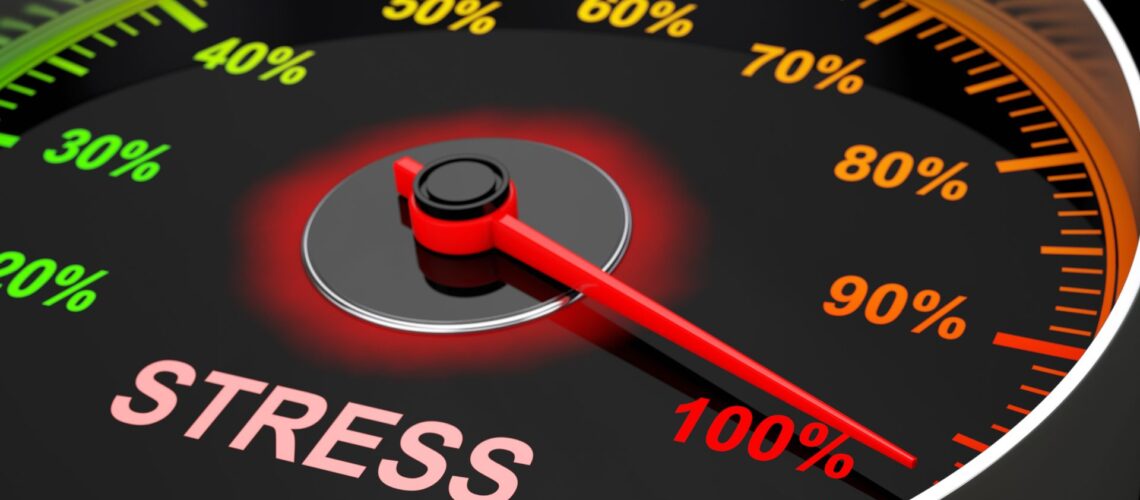Resilience is all about change and how we manage its presence. It’s critical to remember that change can cause stress in our lives too. Therefore, resilience and stress naturally share an interconnected relationship.
Resilience can be defined as the ability to bounce back from adversities, stresses and changes. Essentially, individuals can withstand, recover from and grow in the face of stressors and changing demands.
Understanding the difference between good stress vs bad stress for leaders isn’t just beneficial, it’s essential for maintaining high-performing teams whilst protecting wellbeing. So let’s talk about stress.
The Reality of Workplace Stress in the UK
Even the most grounded professionals can use the phrase “I’m stressed” as they handle life’s challenges. Yet the most common cause of stress is work-related.
According to the Health and Safety Executive, work represents the most common cause of stress in the UK, with eight in ten UK workers (79%) saying they frequently felt stressed¹. Though these were challenging years, an estimated 17 million working days were lost due to work-related stress and anxiety in 2021/22, accounting for half of all working days lost due to work-related ill health.
Armed with this data, leaders must learn to distinguish between good stress and bad stress. Whilst both can impact team performance, they do so in fundamentally different ways. Understanding and managing these stress types can significantly enhance leadership effectiveness and team productivity.
What Is Good Stress? Understanding Eustress
Let’s talk about good stress, because stress can be good.
Consider someone training for the London Marathon, working towards a specific time goal. The physical challenge builds strength whilst creating mental clarity and helping manage anxiety. The nervous excitement before race day represents classic good stress in action. This is a perfect example of eustress.
Good stress, also known as eustress or beneficial stress, is a positive form of stress that boosts energy, enhances focus and motivates us to handle challenges effectively, especially when it comes to work.
Eustress manifests in various professional scenarios:
- The adrenaline rush you get before an important presentation
- The push that makes you meet demanding project deadlines
- The motivation to learn new skills or systems
- The challenge of stepping into expanded responsibilities
For leaders, good stress vs bad stress becomes particularly relevant when motivating teams. Giving a project to a team member who is developing in their role, whilst providing guidance and support to help them step outside their comfort zone, represents an effective use of eustress.
Good stress can drive creativity, productivity and team cohesion. It catalyses innovation, pushing team members beyond their comfort zones to achieve extraordinary results for themselves and the organisation.
What Is Bad Stress? Understanding Distress
On the other hand, bad stress (or distress) is a negative form of stress that drains energy, reduces focus and causes anxiety. It occurs when pressure exceeds an individual’s capacity to cope effectively.
For leaders, there is a tipping point with teams on using good stress as a motivator. The distinction between eustress and distress is critical to recognise. Whilst challenge stimulates growth, overwhelming demands without adequate support create harmful pressure.
Consider the difference: asking someone to deliver against a demanding timeframe without providing resources, guidance or assistance overwhelms people. The stress transforms from eustress into distress for that individual.
This can lead to decreased productivity as people rush between tasks without focus, ultimately resulting in burnout. This became particularly evident during recent years when many employees experienced sustained periods of excessive pressure.
Recognising Good Stress vs Bad Stress in Your Team
Identifying whether team members experience eustress or distress requires careful observation:
Signs of good stress (eustress):
- Increased energy and engagement
- Heightened focus and concentration
- Enthusiasm about challenges
- Improved performance under pressure
- Positive attitude towards deadlines
Signs of bad stress (distress):
- Visible fatigue or exhaustion
- Difficulty concentrating
- Increased irritability or mood changes
- Declining work quality
- Withdrawal from team interactions
- Physical symptoms such as headaches or tension
The transition from good stress vs bad stress often happens gradually, making regular check-ins with team members essential for early intervention.
Strategies to Harness Good Stress and Reduce Bad Stress
Recognising the difference between eustress and distress represents only the beginning. As a leader, your role involves actively managing both stress types within your team.
Promote a Positive Stress Mindset
Encourage team members to view stress as a challenge rather than a threat. This perspective can transform potentially harmful stress into eustress, promoting resilience and growth.
Explain how stress affects the body and mind, share relevant examples and provide practical context. When people understand the mechanics of stress, they gain greater control over their responses.
Create Clear Communication Channels
Uncertainty breeds distress. Clearly communicating expectations, deadlines and goals prevents unnecessary stress within your team. However, consistency represents the crucial factor where many leaders struggle.
Communicating a goal once and expecting team members to proceed independently rarely works effectively. Have regular conversations and coaching sessions with your team, and watch how they handle pressure differently with ongoing support.
Provide Adequate Resources and Support
Ensure your team possesses the necessary resources to handle their tasks effectively. This might involve providing training, appropriate tools or emotional support. When team members feel properly equipped, they’re significantly less likely to experience distress.
Resource provision extends beyond physical tools to include time, information and access to expertise. Eustress thrives when challenge meets capability; distress emerges when demands exceed available support.
Build a Psychologically Safe Environment
Encourage an organisational culture where individuals can express concerns without fear of judgement or retribution. When team members feel heard and valued, they’re more likely to engage positively with workplace pressure.
Psychological safety allows people to admit when they’re struggling, seek help before situations escalate and collaborate on solutions. This openness transforms how teams navigate both good stress and bad stress.
Monitor Workload Distribution
Even positive challenges become overwhelming when accumulated excessively. Regularly review workload distribution across your team, ensuring no individual carries a disproportionate burden.
Balance stretching assignments that create eustress with adequate recovery time and manageable routine tasks. Sustainable performance requires rhythm, not constant intensity.

Frequently Asked Questions About Good Stress Vs Bad Stress
Good stress (eustress) energises and motivates, enhancing performance and driving achievement. It feels challenging but manageable, creating a sense of excitement and purpose. Bad stress (distress) overwhelms and exhausts, impairing performance and damaging wellbeing. It feels uncontrollable and unsustainable, leading to anxiety and burnout. The key difference lies in whether pressure matches available resources and support. When challenges align with capabilities and adequate support exists, stress becomes eustress. When demands exceed capacity without sufficient resources, stress becomes distress.
Watch for warning signs including decreased productivity, increased absence, visible fatigue, declining work quality and withdrawal from team activities. Changes in behaviour, mood or communication patterns often indicate mounting pressure. Someone who was typically enthusiastic may become withdrawn, or a usually reliable performer might miss deadlines. Regular one-to-one conversations provide opportunities to assess stress levels before they become problematic. Creating psychological safety encourages team members to speak up when feeling overwhelmed rather than masking struggles until crisis point.
No, and attempting to eliminate all stress would actually harm performance. The goal isn’t eliminating stress entirely but rather cultivating the right type and level of pressure to drive growth, innovation and sustainable performance. Some stress (eustress) is essential for motivation, learning and achievement. Complete absence of challenge leads to boredom and disengagement. Effective stress management means maintaining optimal pressure levels where teams feel stretched but supported, challenged but capable. This sweet spot varies between individuals and changes over time based on skills, confidence and circumstances.
Building Resilient, High-Performing Teams
Understanding good stress vs bad stress for leaders represents a multifaceted competency with significant implications for team performance and wellbeing. The distinction between eustress and distress shapes how individuals experience workplace challenges and ultimately determines whether pressure enhances or diminishes results.
Effective stress management requires continuous attention rather than one-time intervention. By promoting positive stress mindsets, maintaining clear communication, ensuring adequate support and creating psychologically safe environments, leaders harness the benefits of good stress whilst mitigating the harmful effects of bad stress.
Stress is a multifaceted concept with both beneficial and detrimental effects. As a leader, understanding and managing these stress types can significantly impact your team’s performance and wellbeing.
The goal isn’t eliminating stress entirely but rather cultivating the right type and level of pressure to drive growth, innovation and sustainable performance. When leaders understand and actively manage both eustress and distress, they create conditions where teams thrive under challenge rather than crumble under strain.

